Five years ago, in the heart of Multan’s blazing summer, I was elbow-deep in cracked soil and nursery catalogs. That’s when I first laid eyes on a picture of the Hot Wings maple tree. Honestly? I laughed. “Hot Wings? What is this, a garden or a food court?” But curiosity took over. I planted one. Fast forward to now—it’s one of the best decisions I’ve ever made. This tree? It’s a stunner. Low maintenance, fiery red seeds, compact size. It’s like the cool cousin of sugar maple, with a little extra sass.
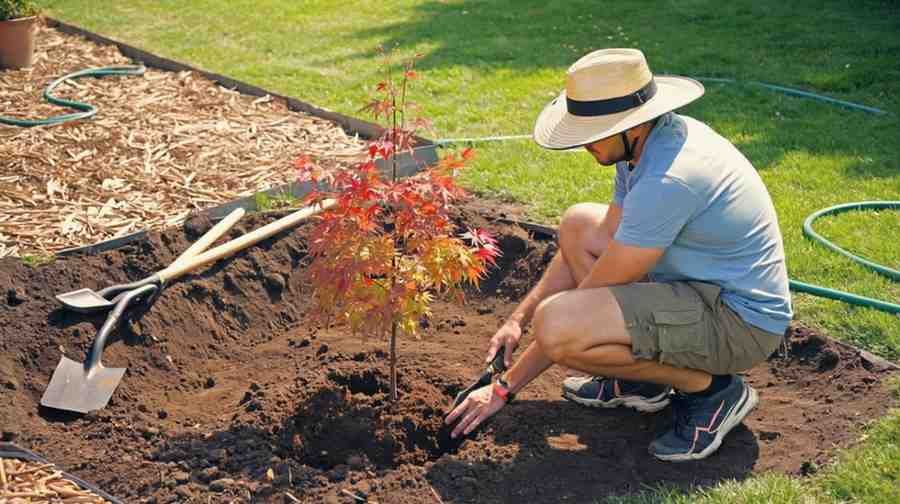
What Makes the Hot Wings Maple Tree So Special?
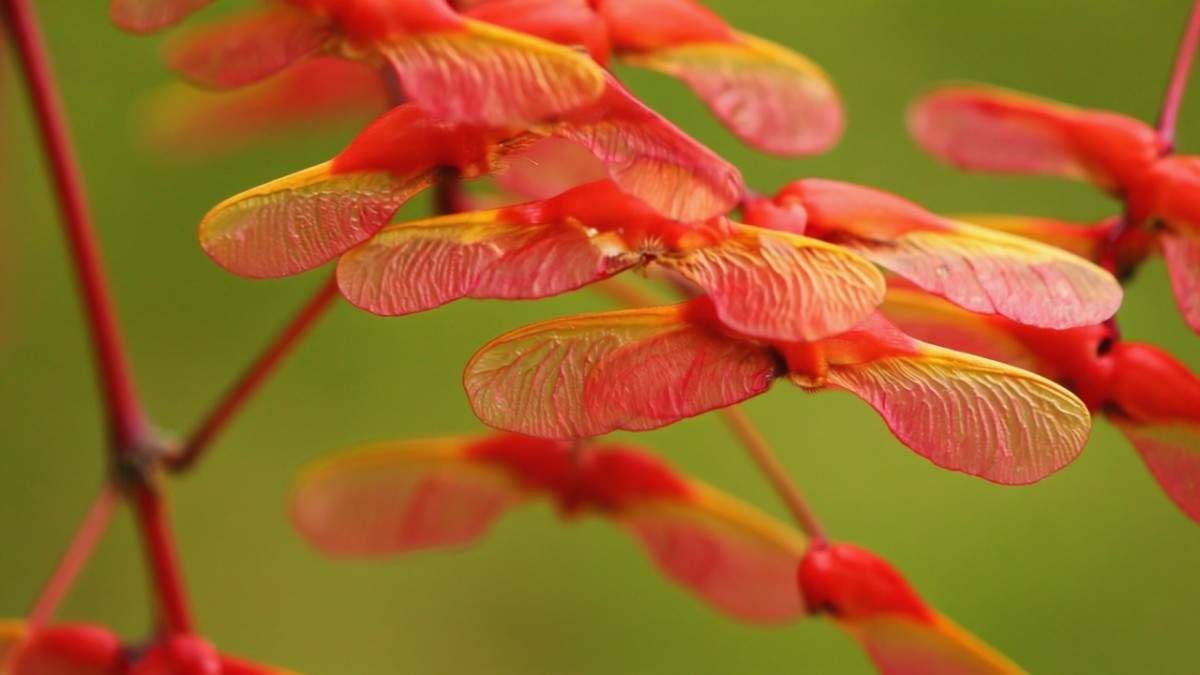
Let’s break it down. This isn’t your regular maple. It’s a Tatarian maple—a smaller, more compact species. But it’s not the leaves that steal the show. Nope. It’s those samaras (winged seeds). In summer, they turn a brilliant, lipstick-red. I’ve had people stop mid-walk and ask, “Is that a flower?” Nope. Just seeds, showing off. And the name? Well, it makes sense. They really do look like tiny red wings. Or spicy snacks. Either way, it’s unforgettable.
The Personality of a Hot Wings Maple Tree
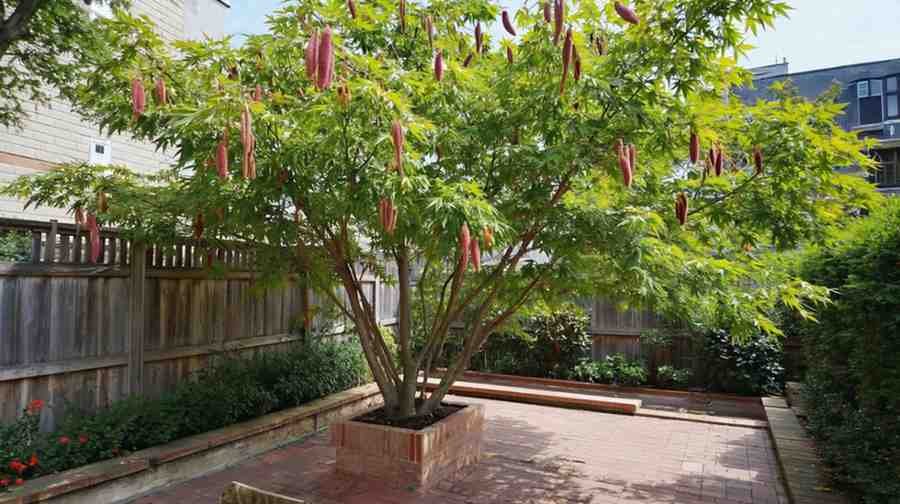
If trees had personalities, this one would be your cheerful, outgoing neighbor. Always looking good. Never asking for much. It stands about 15–20 feet tall, which makes it perfect for small yards or city gardens. It spreads wide, but politely—nothing aggressive. And it keeps its shape so well, pruning becomes more of a hobby than a chore. In fact, it’s one of the easiest ornamental maples I’ve worked with. Seriously, if you’re lazy but love beauty? This is your soulmate.
Why It’s the Underrated Hero of Landscaping
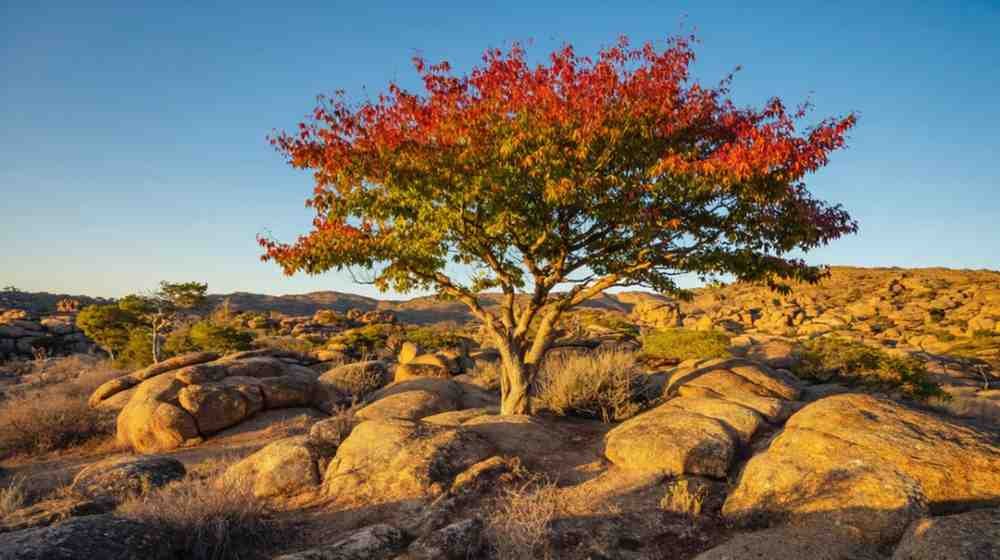
People often chase the big names. Red maple. Sugar maple. Japanese maple. All beautiful, yes. But the Hot Wings maple tree? It brings a spicy surprise to your yard, and it doesn’t need the drama. It thrives in tough soils. Resists drought. Doesn’t throw tantrums in harsh winters or blazing heat. You want curb appeal without the hassle? Plant this tree. Even in commercial landscapes, it adds structure and color—without needing a crew of experts to maintain it.
Seasons with Hot Wings: What to Expect

Let’s take a seasonal tour, shall we? Spring starts calm. Soft green leaves, fresh growth. But come summer—bam! Those samaras turn red and glow against the green leaves. Autumn? Another treat. Leaves go yellow-orange, then drop gracefully. Winter? The bare branches still look neat. No mess, no fuss. It’s not the kind of tree that hogs the spotlight year-round, but when it shines? It really shines. And trust me, those red samaras are a conversation starter.
Planting Tips from My Backyard to Yours
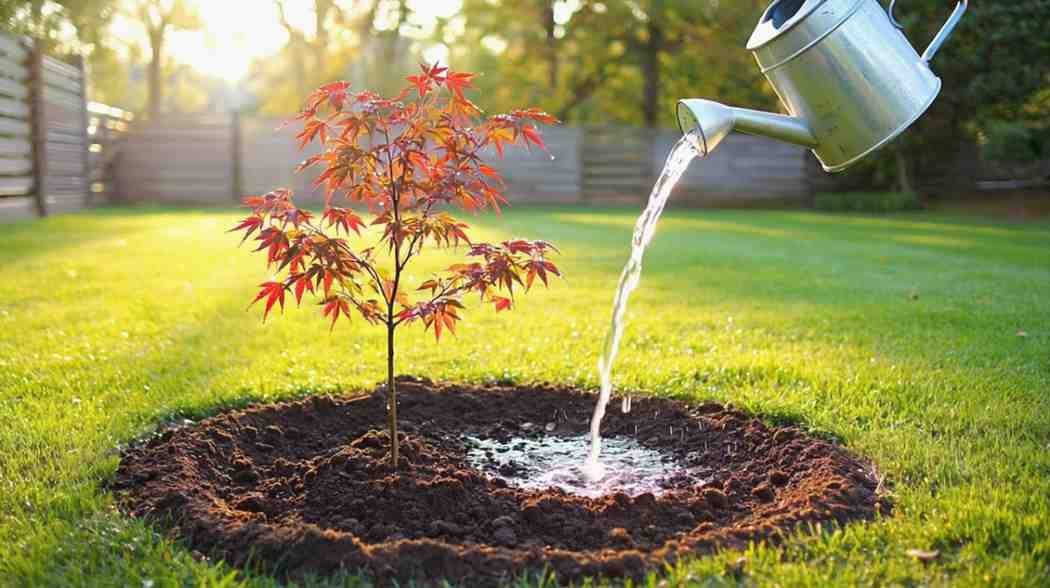
Here’s what I’ve learned: Hot Wings maple tree isn’t picky. But a little care goes a long way. Pick a sunny spot. Full sun brings out the brightest red in those samaras. Give it space—about 15 feet around—and plant in well-draining soil. Water deeply in the first year. After that, it’s pretty drought-tolerant. Mulch around the base to keep the roots cool. And don’t over-fertilize. This tree doesn’t need protein shakes to look good. It’s naturally stunning.
Hot Wings vs. Other Maples: The Real Tree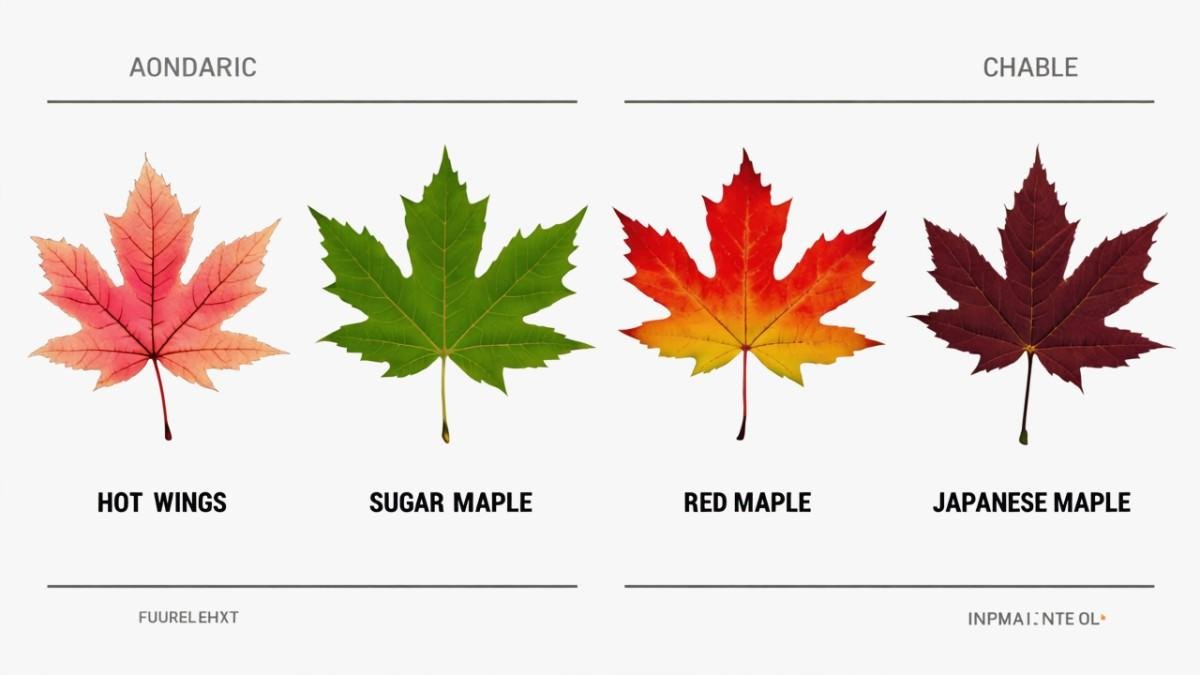
Want drama? Go for a Japanese maple. Want size? Sugar maple. Want shade? Red maple. But if you want a low-maintenance, colorful, compact, and stress-free tree—Hot Wings maple tree wins. It’s especially great for small urban yards, patios, and tight garden spots. And guess what? It won’t mess up your driveway or foundation with aggressive roots. That alone earns it five stars from me. It’s the underdog that outshines the showoffs.
Common Problems (and Real Solutions)
Every tree has quirks. The Hot Wings maple isn’t a diva, but sometimes, stuff happens. Got browning leaves in summer? Check the soil. Could be dry or compacted. Seeing aphids? Blast them off with water. Scale bugs? Neem oil works like magic. Occasionally, branches may die back in cold winters—prune in spring. And if your samaras aren’t bright red? Maybe it’s too shady. This tree loves the spotlight. Keep it sun-kissed, and you’ll be rewarded.
Wildlife & Ecosystem Perks
This one’s for the nature nerds (me included). Birds love nesting in the dense branches. Pollinators often visit the spring flowers. And because this tree’s not invasive, it plays nice with native species. Plus, fewer pests = fewer pesticides. So it’s a win for your yard and the planet. I’ve even seen butterflies chilling around mine on warm days. It adds life to your garden—not just color.
Perfect Places to Plant It (From Backyard to Business Front)
Where does the Hot Wings maple tree fit best? Just about anywhere! I’ve planted one in a narrow courtyard. Seen another in a hospital landscape. Even one in a container on a rooftop garden. It’s that adaptable. Got a rental property and want low-maintenance beauty? Done. Need a statement piece by your driveway? Perfect. Want something that impresses but doesn’t beg for attention? Say no more. It fits all vibes.
Real Talk: When Things Go Wrong (and How to Fix Them)
Let’s not pretend everything’s always rosy. I’ve had moments with my Hot Wings maple tree where I stood there, hands on hips, muttering, “What now?” Like that one spring it leafed out late. I panicked. Thought I killed it. But nope. Just a slow start. Another time? Red samaras were dull. Turns out I had overwatered. This tree likes things dry-ish. Pro tip: If leaves look limp or yellow, check your watering. If there’s mold near the roots? You’re loving it too much. Give it space. Trust the process. This tree is tougher than it looks.
The Color Show: What You’re REALLY Getting
Everyone talks about flowers. But you know what gets more attention? Color that shows up when nobody expects it. That’s the Hot Wings maple tree. It doesn’t bloom dramatically like magnolias or dogwoods. It glows in mid-summer. Bright red winged seeds flutter like flames in the breeze. It’s subtle. It’s cool. But it stops people in their tracks. I had a guest once walk past roses and lilies and say, “What IS that red thing?” I just smiled and said, “Hot Wings.” And no, I didn’t mean the food. But now I want some.
Ahmad’s Annual Hot Wings Care Calendar
I’ve learned the rhythm of this tree like clockwork. Here’s my personal calendar:
- Spring: Light pruning. Clean out any winter dieback. Check for pests. Add mulch.
- Early Summer: Watch for those glowing red samaras. Enjoy the show!
- Mid-Summer: Water during long dry spells. No heavy feeding.
- Autumn: Let the leaves drop naturally. Rake gently.
- Winter: This baby sleeps. Don’t disturb. Just admire the clean structure.
Stick to this, and your tree will return the favor with glowing beauty all year round.
Propagation: Can You Grow More Hot Wings?

Short answer: Yes. Long answer? It takes patience. You can collect the samaras (those spicy wings) in summer. Let them dry. Cold-stratify them for about 90–120 days (basically, store in damp paper towels in the fridge). Then plant in well-draining soil. Keep them moist—but not soggy. It might take a while to sprout. Or buy a grafted one from a nursery for guaranteed success. I tried both. The grafted one looked good faster. But growing your own? Now that’s a flex.
Best Tree Companions: What to Plant Nearby

Hot Wings maple tree plays well with others. Want some ideas?
- Underplant with: Hostas, ornamental grasses, or even creeping thyme.
- Nearby shrubs: Ninebark, dwarf lilac, or barberry.
- Accent plants: Daylilies, purple salvia, or coneflowers.
I’ve found it shines best when surrounded by plants that let its red samaras pop. No one wants competition in a color fight. Let Hot Wings be the star. The others? Supporting actors.
Personal Moment: The Tree That Became a Tradition

One summer evening, I was sitting on my patio with my niece. She looked at the red samaras, eyes wide, and whispered, “They look like little hearts with wings.” That stuck with me. Now, every July, we take pictures under that tree. It became more than just a plant. It became a memory-maker. That’s the thing about trees. You don’t realize how deeply they root into your life until they become part of your family stories.
Worldwide Love: Why This Tree Works Everywhere
Let me be clear. You don’t have to live in Multan to enjoy a Hot Wings maple tree. This tree is hardy from zones 3 to 7. That’s a huge range. From Canada to Kansas. From Sweden to northern Japan. As long as your winters aren’t tropical and your summers aren’t swampy, you’re good. It handles snow. Laughs at wind. Rolls its eyes at bad soil. It’s basically the international traveler of ornamental trees—charming, tough, and low maintenance.
Advice for First-Time Planters
Let me give you the advice I wish someone gave me:
- Don’t overthink it. This tree isn’t needy.
- Use compost, not chemicals. It prefers natural nutrition.
- Start small. Even a 3-gallon tree grows fast.
- Keep it in sight. You’ll want to admire it daily.
- Take photos. Trust me. In five years, you’ll thank yourself.
And if your tree looks weird one year? Just breathe. Sometimes nature has off days too.
FAQs – Hot Wings Maple Tree
Q1: Does the Hot Wings maple tree grow fast?
Yes! Moderate to fast. Expect about 1–2 feet per year with proper care. It reaches maturity in 10–15 years.
Q2: Are the red wings actual flowers?
Nope. They’re samaras—winged seeds. But they look like flowers and show up in mid-summer, stealing the spotlight.
Q3: Is it good for small yards?
Absolutely. This is where it shines. Only grows 15–20 feet tall and wide. Perfect for compact spaces.
Q4: Can I grow it in a container?
Yes, but only for a few years. Use a large, well-draining container. Eventually, it’ll need open ground.
Q5: Are the seeds edible or harmful?
They’re not toxic, but they aren’t meant to be eaten. Birds sometimes nibble. You? Better stick to chicken wings.
Final Thoughts: A Tree That Grows With You
When I planted my first Hot Wings maple tree, I thought I was adding a pop of color to my yard. What I really got was a silent friend. One that marked seasons, held memories, and added quiet joy. Gardening isn’t just about soil and sunlight. It’s about stories. About planting things that will outlive you. That will whisper beauty into someone else’s life down the road.
The Freeman Maple Tree – Nature’s Bold Hybrid with a Gentle Heart
Falling for Maple Tree Species – A Leaf, A Story, A Whole Backyard
Related Posts Links :
https://homegardeni.com/falling-for-maple-tree-species-a-leaf-a-story-a-whole-backyard/
https://homegardeni.com/celebration-maple-tree-the-backyard-hero-with-fiery-swagger/
https://homegardeni.com/maple-tree-identification-a-complete-and-fun-guide/
https://homegardeni.com/shantung-maple-tree-a-love-letter-from-a-backyard-gardener/
https://homegardeni.com/the-freeman-maple-tree-natures-bold-hybrid/